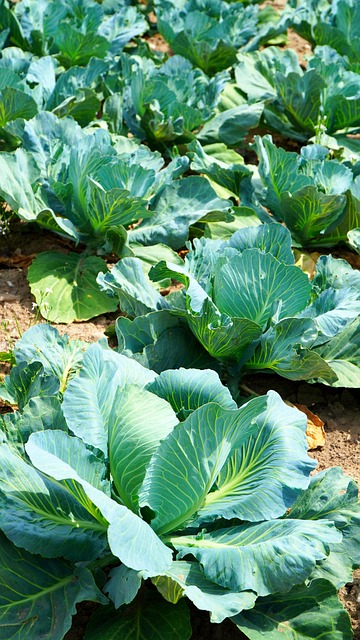Sustainable Strategies for Ensuring Steady Income on Farms
In today's volatile agricultural market, farmers face numerous challenges in maintaining a consistent and reliable income stream. However, by implementing sustainable strategies, farm owners can create income-producing farms that generate steady revenue throughout the year. This article explores various approaches to diversifying farm income, from expanding crop varieties to developing value-added products and establishing direct sales channels.

How can farmers diversify their crop selection for steady income?
One of the most effective ways to ensure a steady income on farms is through crop diversification. By cultivating a variety of crops with different growing seasons and market demands, farmers can spread their risk and maintain a more consistent cash flow throughout the year. This strategy involves carefully selecting crops that thrive in the local climate and soil conditions while also considering market trends and consumer preferences.
For example, a farm might combine traditional staple crops like corn or wheat with high-value specialty crops such as herbs, berries, or organic vegetables. This diversification not only helps to stabilize income but also improves soil health through crop rotation and reduces the impact of pest infestations or crop failures.
What role do value-added products play in farm income stability?
Value-added products represent a significant opportunity for farmers to increase their income and reduce dependency on raw commodity prices. By processing their crops or livestock products into finished goods, farmers can capture a larger share of the consumer dollar and create new revenue streams.
Examples of value-added products include:
-
Jams and preserves made from farm-grown fruits
-
Artisanal cheeses produced from farm milk
-
Wool products from sheep farms
-
Dried herbs and spices
-
Farm-brewed beer or wine
These products not only command higher prices but also allow farmers to utilize excess or imperfect produce that might otherwise go to waste. Additionally, value-added products can help build brand recognition and customer loyalty, further stabilizing farm income.
How can direct sales channels boost farm revenue?
Establishing direct sales channels is a powerful strategy for income-producing farms to increase their profitability and build stronger connections with consumers. By bypassing middlemen and selling directly to customers, farmers can retain a larger portion of the retail price and gain more control over their marketing and pricing strategies.
Common direct sales channels include:
-
Farmers’ markets
-
Community Supported Agriculture (CSA) programs
-
Farm stands or on-site stores
-
Online marketplaces and e-commerce platforms
-
Direct-to-restaurant or direct-to-retailer partnerships
These channels not only provide higher margins but also offer valuable feedback from customers, helping farmers to adjust their product offerings and improve customer satisfaction.
What role does agritourism play in creating steady farm revenue?
Agritourism has emerged as a lucrative opportunity for farmers to diversify their income streams. By offering unique experiences and educational opportunities to visitors, farms can generate additional revenue while promoting their brand and products.
Popular agritourism activities include:
-
Farm tours and educational workshops
-
Pick-your-own fruit or vegetable experiences
-
Farm-to-table dinners or cooking classes
-
Seasonal events like corn mazes or pumpkin patches
-
Farm stays or rural bed and breakfast accommodations
Agritourism not only provides direct income but also serves as a marketing tool, attracting customers to the farm’s other products and services.
How can sustainable farming practices contribute to long-term financial stability?
Implementing sustainable farming practices is not just environmentally responsible; it can also contribute significantly to a farm’s long-term financial stability. Sustainable methods often lead to reduced input costs, improved soil health, and increased resilience to climate change, all of which can positively impact a farm’s bottom line.
Key sustainable practices include:
-
Conservation tillage to reduce soil erosion and improve water retention
-
Integrated pest management to decrease reliance on costly pesticides
-
Renewable energy systems like solar panels or wind turbines to lower electricity costs
-
Water conservation techniques such as drip irrigation
-
Cover cropping to enhance soil fertility and reduce fertilizer expenses
These practices can help farms maintain productivity while reducing operational costs, leading to more stable and potentially higher profits over time.
What financial strategies can farms employ to ensure steady income?
To ensure steady income, farms can employ various financial strategies and diversification techniques. Here’s a comparison of some popular approaches:
| Strategy | Description | Potential Income Stability Impact |
|---|---|---|
| Crop Insurance | Protects against crop failures or price drops | High |
| Forward Contracts | Pre-selling crops at a fixed price | Medium to High |
| Futures and Options | Hedging against price fluctuations | Medium |
| Off-Farm Income | Supplementing farm income with other jobs | Medium to High |
| Government Programs | Participating in subsidies or support programs | Medium |
| Diversified Investments | Investing in non-farm assets | Low to Medium |
Prices, rates, or cost estimates mentioned in this article are based on the latest available information but may change over time. Independent research is advised before making financial decisions.
Implementing a combination of these strategies can help farms create a more stable financial foundation. It’s important for farmers to regularly review and adjust their approach based on market conditions, farm performance, and long-term goals.
In conclusion, ensuring steady income on farms requires a multifaceted approach that combines diversifying crops, creating value-added products, establishing direct sales channels, embracing agritourism, implementing sustainable practices, and employing sound financial strategies. By adopting these sustainable strategies, farmers can build resilient, income-producing farms capable of weathering market fluctuations and providing a stable livelihood for years to come.
The shared information of this article is up-to-date as of the publishing date. For more up-to-date information, please conduct your own research.




